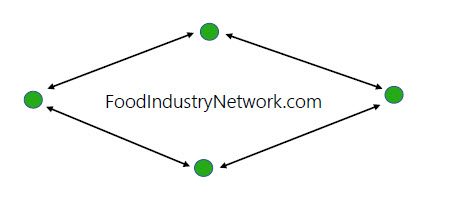Alberta irrigation farmers strive for efficiencies to battle through droughts

Irrigation reservoirs in southern Alberta are looking a lot better than they have in recent years.
“We are going into the year with full reservoirs, which is nice, especially since the snowpack in the mountains is still in that lower quartile,” said Alex Ostrop, chair of the Alberta Irrigation Districts Association (AIDA) and board member of the St. Mary River Irrigation District (SMRID).
“It’s very similar to last year, but the biggest difference is last year we went into the season with empty reservoirs, and this year we’re going in with full reservoirs. We had the low on-farm allocation, but in the end it didn’t really have a material consequence because we had those timely rains in May and June.”
Read Also


New features from Kioti on its Canadian line of tractors and loaders
The Kioti brand, which is a division of South Korea-based Daedong Corp., has announced updates to its Canadian line of tractors and loaders.
SMRID boosted its allocation from eight to 12 inches of water per acre at its annual general meeting in early April thanks to the full reservoirs. However, last year’s rain will be seen as a bonus rather than an expectation going forward.
“Next year’s snowpack will be very important because we are not really counting on the same May-June rain this year,” said Ostrop, a farmer near Grassy Lake.
“If they come, fantastic, but if it’s a year of normal consumption of agricultural demand, then we will probably be going into next year with lower reservoir levels.”
Alberta has approximately 1.5 million acres of irrigated land for agricultural use.
Those attending the SMRID meeting were told the district has added 90 parcels.
Expansion is always met by raised eyebrows by some during drought conditions, but Ostrop said irrigation districts’ efficiency has grown by leaps and bounds.
“Overall, our water security over the last few years has improved despite the drought-like conditions. Our expansion has been less than the efficiencies gained,” said Ostrop.
Each year, the province and irrigation districts make investments in the system through the Rehabilitation Program. In the province’s 2024 budget, $19 million was allocated to the program.
Fourteen projects have begun or progressed in Alberta’s 11 irrigation districts since the funding was announced. There was the $130 million Chin Reservoir expansion announced in 2021 that is still in its study stage that will add up to 200,000 new irrigated acres to the districts.
“There are big numbers being thrown out at the $130 million, but you have to put that into perspective that 70 per cent of that is funded by the irrigation farmer for the irrigation districts. It’s still the farmer that is paying the vast majority of it,” said Ostrop.
“All the irrigation farmers are paying for it, and they are paying for it for the goal of increased water security.”
The majority of gains have been made through farm practices such as moving from flood irrigation to low-pressure nozzles.
Variable water rates make the necessary adjustments so that hill tops are watered slightly different than the draws.
“There are still more efficiency gains to be had, even at the on-farm level. It requires more investment and more technology. The easy stuff has been picked over already, but there is still plenty of efficiency that can be gained,” said Ostrop.
“Everyone recognizes water security is the most important thing other than seed and sunshine. Farmers don’t think quarter to quarter, even year to year. It’s generational.”
Four per cent of the province’s agricultural cultivated land is irrigated yet makes up close to 30 per cent of Alberta’s agriculture gross domestic product.
This allows for greater crop mixtures and an agriculture economy that can diversify, both in local value-added processing and commodity exports.
There are no permanent standing bodies of water southeast of the Rockies in Alberta. The irrigation reservoirs are also seen as lakes, providing fish habitats and recreational opportunities.
“Over 60 communities get their water because of irrigation infrastructure. Obviously, it’s important for the farmer and the Alberta economy,” said Ostrop.
“But it has also shaped the life of the southern part of this province. Many of these towns wouldn’t exist otherwise.”
Farmers are irrigating significantly more acres than they were 50 years ago, and yet the overall diversion of water is less than it was 50 years ago.
“Sustainability is at the forefront of everything that we do,” said Ostrop.
Source: www.producer.com


